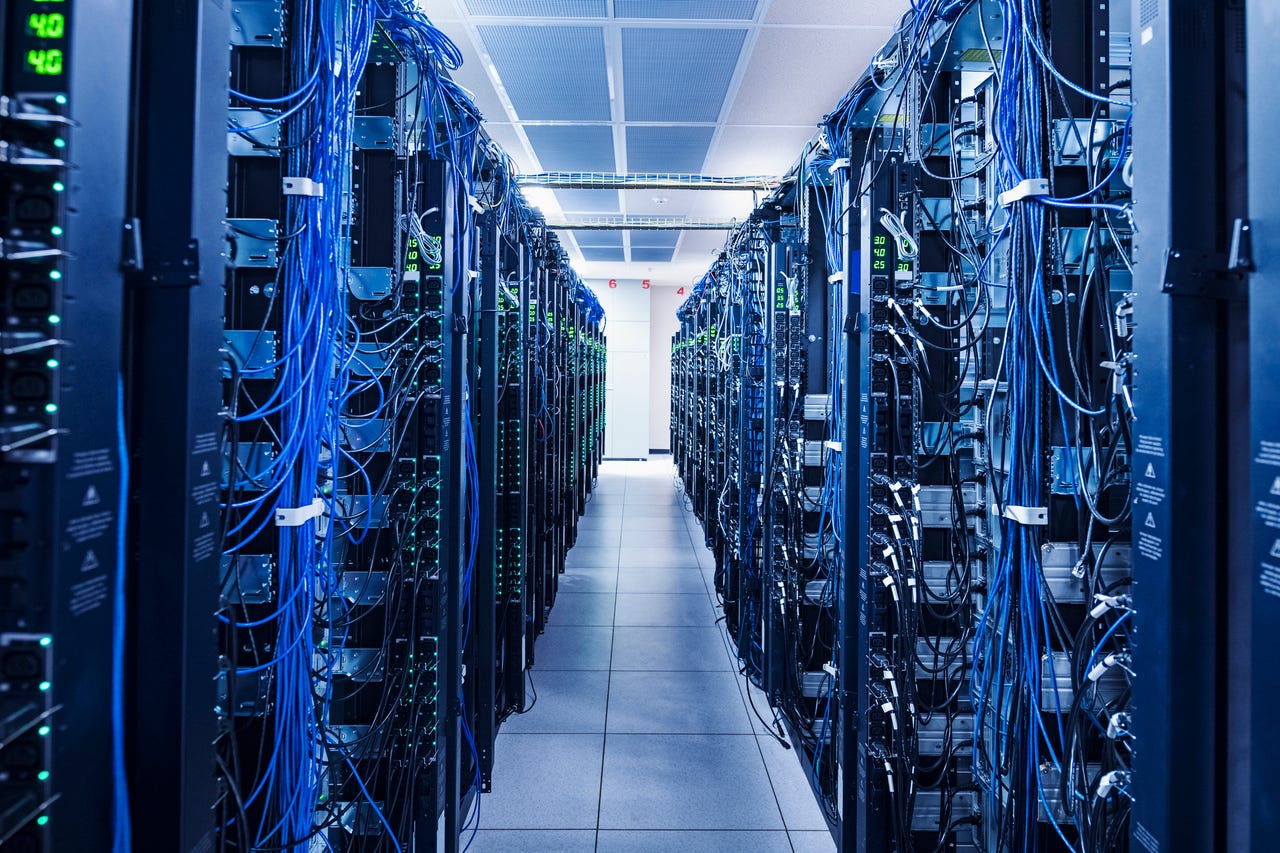Singapore heats up data centers with operating standards for tropical climates

Singapore has released operating standards that it says will optimize energy efficiency in data centers located in tropical climates.
Developed by the Infocomm Media Development Authority (IMDA), the recommended standards offer a roadmap to increase data center operating temperatures to 26 degrees Celsius and above. These standards can potentially yield energy savings of between 2% and 5% for every 1 degree Celsius increase in such environments, the government agency said, citing research from the University of Toronto.
Also: Green tech is hard work. Here’s how to find more support
Several data center operators in Singapore have run pilots on the new standard, including Digital Realty, which pushed their operating temperatures by 2 degrees Celsius at two of its 4.5MW (megawatts) data halls. These spaces within data centers contain server cabinets and are typically built on elevated floors to facilitate airflow and cooling systems.
By increasing the operating temperatures, Digital Realty was able to cut its total energy consumption in the two data halls by 2% to 3% during the trial period, according to IMDA. Trials also have commerced at a government data center as part of its sustainability efforts. The facility is operated by Government Technology Agency, which is the public sector’s CIO office.
The ability to sustainably run such infrastructures is critical as Singapore looks to boost its connectivity and compute capacities to support emerging technologies, such as generative artificial intelligence (AI).
“As our businesses scale up adoption of these AI-powered services, demand for high-bandwidth connectivity and compute power will increase significantly, too,” said Senior Minister of State, Communications and Information Janil Puthucheary, at the Asia Tech x Singapore summit. “Our digital infrastructure must be ready to support these demands.”
Also: Everything is moving to the cloud. But how green is it, really?
The country earlier this week laid a years-long roadmap that includes building 10Gbps nationwide connectivity in the next five years and providing capacity to double subsea cable landings within the next decade.
Incorporating green data centers in this blueprint will support the growth in compute capacity while maintaining environmental sustainability, said Puthucheary.
“As demand for data centers increases, energy efficiency will be critical for ensuring sustainable growth of the industry. These standards will help operators determine the best operating temperature to optimize energy efficiency while safeguarding operational reliability,” he said.
The minister added that one data center operator was able to achieve an estimated SG$250,000 in energy cost savings a year from adopting the new standards, which he said were among the world’s first for optimizing data center energy efficiency in tropical climate environments.
Also: How to make tech more sustainable: Five practical ways to make it happen
According to IMDA, cooling systems account for up to 40% of total energy consumption in a typical data center, with many operators typically operating their equipment at temperatures of 22 degrees Celsius and below. This presents added challenges for facilities in warmer tropical climates since more energy is used to run the cooling systems.
IMDA noted that while there was increased awareness that data centers could operate at higher temperatures, there was a lack of established industry guidelines on how this could be achieved — and at higher humidity levels — without compromising operational efficiency.
“Singapore’s new standard was developed against this background and following consultation with the industry,” the agency said.
The new standard offers a set of recommendations for operating data centers in climates where the average temperature clocks at an average of 30 degrees, with peaks of 37 degrees Celsius, and relative humidity levels of 84%, with peaks of above 90%.
The standards are established based on analysis of empirical data collected from production servers monitored by the Tropical Data Centre (TDC) research team. The operating manual is available for purchase online and includes details on the method for application, measurement, and monitoring.
Also: Tech for a sustainable future: The challenges and opportunities ahead
IMDA also is working with the Building & Construction Authority to include the new tropical climate standard in the Green Mark certification scheme for data centers, which outlines the energy efficiency and sustainability benchmarks for the sector.
In 2016, IMDA unveiled plans to work with industry players to assess the feasibility of tropical data centers, in which environmental temperatures would be tested at up to 38 degrees Celsius and ambient humidity at 90% or more. Through these trials, the agency had hoped to slash data center power consumption by up to 40% and reduce carbon emissions.
In 2021, two Singapore universities also established a research fund to develop sustainable cooling technologies for data centers operating in tropical locations. The initiative included a testbed facility and participation from industry players, including Keppel Data Centres, Ascenix, and Red Dot Analytics. Local government agencies also provided feedback on the research.
The Singapore government last year said it would be “more selective” of new data centers it planned to accommodate, with priority given to facilities that could demonstrate high resource efficiency and operate in a sustainable manner consistent with the country’s climate change commitments.
Also: These mushroom-based chips could power your devices and help save our planet
Singapore has a 10-year roadmap to drive sustainable developments and achieve its goal of net zero emissions as soon as it is viable. The Singapore Green Plan 2030 outlines various targets across different areas, including plans to deploy enough solar energy to power 350,000 households a year, cut waste sent to landfill by 30%, and have at least 20% of schools be carbon-neutral.
For all the latest Technology News Click Here
For the latest news and updates, follow us on Google News.
